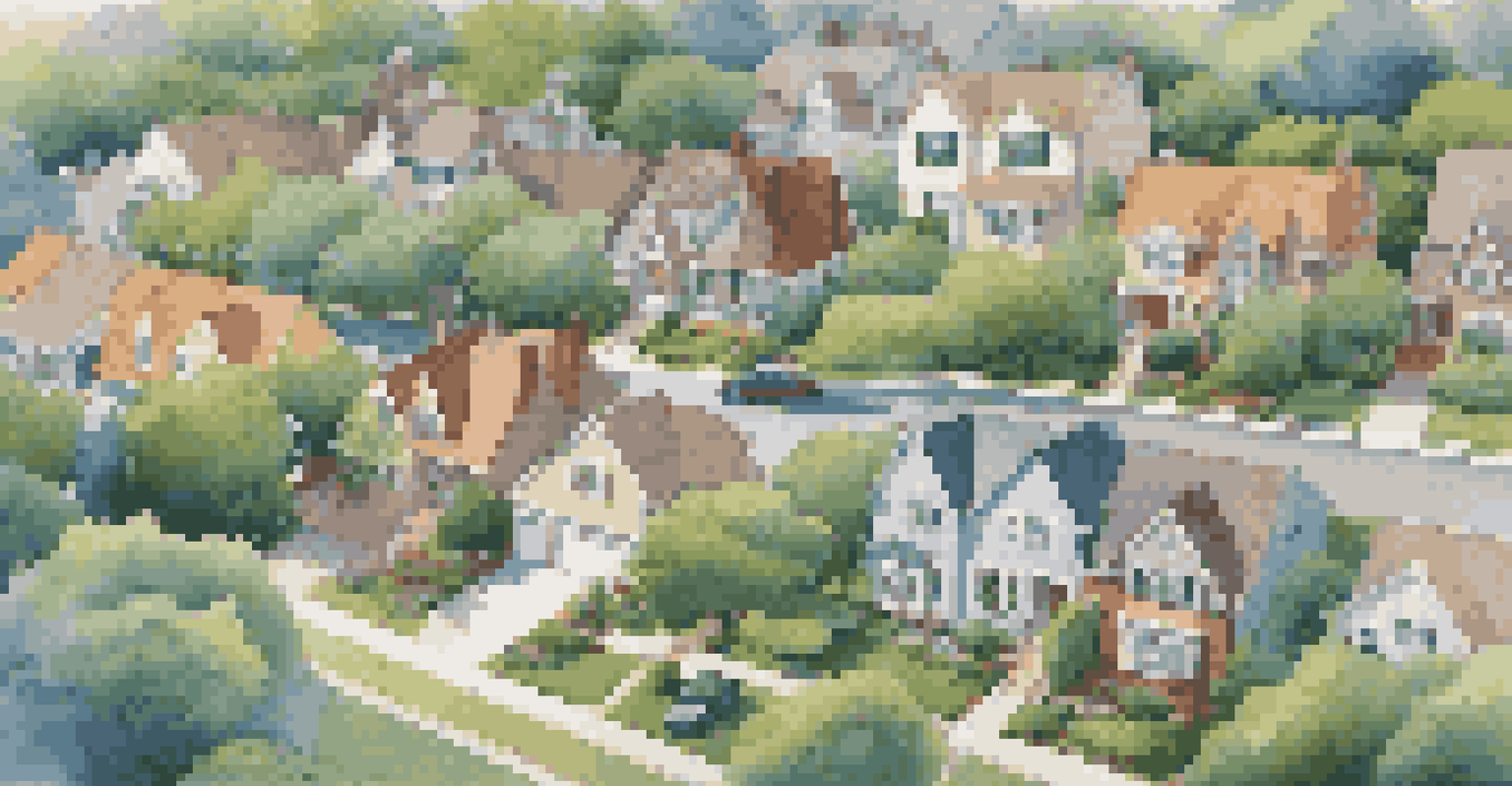Virtual Tours: Changing the Landscape of Property Showcasing

What Are Virtual Tours and How Do They Work?
Virtual tours are immersive digital experiences that allow potential buyers to explore properties from anywhere in the world. Using 360-degree cameras and advanced software, these tours create a lifelike environment that mimics a physical walk-through. They can include video, images, and interactive elements, giving viewers a comprehensive understanding of the space.
Virtual tours are not just a tool; they are a bridge that connects potential buyers and properties in a digital landscape.
Imagine being able to stroll through a home, peeking into rooms, and even viewing the backyard—all from the comfort of your couch. This technology not only enhances the property showcasing experience but also saves time for both buyers and real estate agents. With just a few clicks, interested parties can assess whether a property meets their needs without the hassle of in-person visits.
As technology advances, virtual tours are becoming increasingly sophisticated, incorporating features like virtual staging and augmented reality. This allows potential buyers to visualize how their personal style could transform a space. Overall, virtual tours are bridging the gap between physical and digital real estate exploration.
The Benefits of Using Virtual Tours for Property Showcasing
One of the major benefits of virtual tours is the convenience they offer. They allow potential buyers to view properties at their own pace and on their own schedule. This accessibility means that people can revisit the tour as many times as they want, making it easier to compare properties without the pressure of a timed walk-through.

Additionally, virtual tours cater to a broader audience. For instance, out-of-town buyers or those with mobility challenges can explore properties without the need for travel. This inclusivity opens up the market, potentially leading to faster sales and a wider customer base for real estate agents.
Virtual Tours Enhance Property Viewing
Virtual tours provide an immersive experience that allows buyers to explore properties conveniently from anywhere.
Another significant advantage is the enhanced marketing potential. Properties with virtual tours often stand out in listings, attracting more views and inquiries. This visual appeal can lead to a more engaged audience, ultimately boosting the chances of closing a sale.
How Virtual Tours Improve the Buyer Experience
Virtual tours create an engaging experience that traditional photos simply can't match. Buyers feel more connected to the property when they can explore each room in detail and visualize themselves living there. This emotional engagement can be a powerful motivator in the decision-making process.
The future of real estate lies in virtual experiences that offer convenience, accessibility, and a deeper connection to properties.
Furthermore, these tours provide a sense of transparency, allowing buyers to see every corner of the home without any hidden surprises. This level of honesty builds trust between the buyer and seller, which is crucial in a real estate transaction. When buyers feel informed and confident, they are more likely to proceed with an offer.
Lastly, virtual tours can help streamline the buying process by filtering out properties that don't meet a buyer's criteria. Instead of spending a whole day visiting multiple homes, buyers can quickly narrow down their options through a few virtual tours. This efficiency can make the entire experience more enjoyable.
The Role of Technology in Enhancing Virtual Tours
The technology behind virtual tours has evolved rapidly, making them more engaging and realistic. With the use of high-definition cameras and advanced software, real estate professionals can create stunning visuals that capture the essence of a property. This attention to detail can significantly impact a buyer's perception.
Moreover, the integration of virtual reality (VR) has taken these tours to the next level. Imagine putting on a VR headset and feeling as if you're walking through a home in real life. This immersive experience can create a deeper emotional connection to the property, making it easier for buyers to envision their future there.
Increased Accessibility for Buyers
These tours cater to a broader audience, making it easier for out-of-town or mobility-challenged buyers to view homes.
Additionally, technology enables the inclusion of interactive elements, such as clickable hotspots that provide more information about specific features. This interactivity not only keeps viewers engaged but also empowers them with the knowledge they need to make informed decisions.
Trends in Virtual Tours for Real Estate
As virtual tours gain popularity, several trends are emerging that are shaping the future of property showcasing. One trend is the increasing use of drone technology, which allows for stunning aerial views of properties and their surroundings. This bird's-eye perspective can provide potential buyers with a better understanding of the location and its features.
Another trend is the rise of live virtual tours, where agents can guide potential buyers through a property in real-time. This interactive approach allows buyers to ask questions and get instant feedback, making the tour feel more personal and engaging. It's a great way to replicate the experience of an in-person showing while still enjoying the benefits of remote viewing.
Lastly, there is a growing emphasis on mobile-friendly virtual tours. With more people using smartphones and tablets to browse properties, ensuring that tours are easily accessible on these devices is crucial. Real estate professionals are adapting their strategies to meet this demand, leading to more seamless and user-friendly experiences.
Challenges in Implementing Virtual Tours
While virtual tours offer numerous benefits, there are also challenges that real estate professionals must navigate. One of the primary hurdles is the initial investment required for quality equipment and software. High-resolution cameras and 3D mapping tools can be costly, which may deter some agents from adopting this technology.
Additionally, creating a virtual tour that accurately represents a property can be time-consuming. It requires planning, shooting, and editing to ensure that the final product highlights the property's best features. For busy agents, this added workload can be a significant consideration.
Future Innovations in Virtual Tours
As technology advances, virtual tours will likely incorporate enhanced VR and AI features, becoming standard in real estate.
Lastly, not all buyers are tech-savvy or comfortable with virtual tours. Some may prefer traditional methods of viewing properties, and it’s essential for agents to offer a range of options to accommodate different preferences. Balancing these challenges while leveraging the benefits of virtual tours is key to successful implementation.
The Future of Virtual Tours in Real Estate
Looking ahead, the future of virtual tours in real estate appears bright. As technology continues to advance, we can expect even more immersive experiences, such as enhanced VR capabilities and artificial intelligence integration. These innovations will allow buyers to interact with properties in ways we can only imagine today.
Moreover, virtual tours are likely to become a standard part of the home-buying process, rather than just an optional feature. As consumer demand for convenience and efficiency grows, real estate professionals will need to adapt to stay competitive. This shift will likely lead to an increase in the quality and frequency of virtual tour offerings.

Finally, as the market embraces these changes, we may see an even greater focus on eco-friendly practices. Virtual tours can reduce the need for physical showings, minimizing carbon footprints associated with travel. This alignment with sustainability is not only beneficial for the environment but also resonates well with today's socially-conscious buyers.